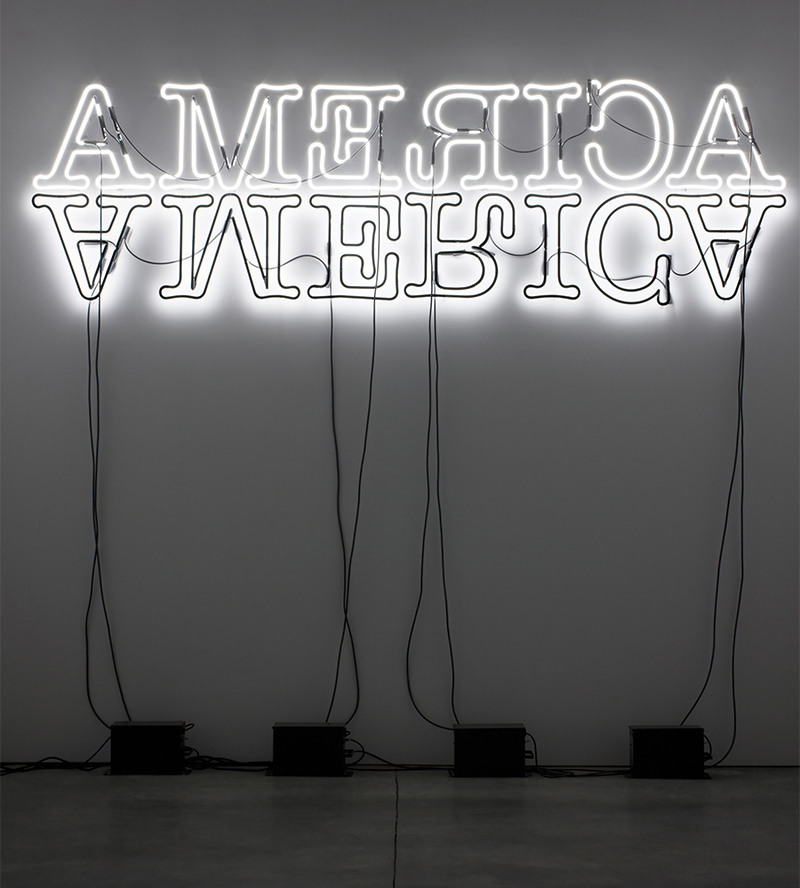
The brick-red existing structure is now connected to the new white addition seen behind it.
ON JUNE 2, 2013, SFMOMA closed its doors for nearly three years while a massive expansion and remodel project got underway. During this time the existing collection was dispersed among partner museums (Asian Art Museum, Cantor Arts Center at Stanford University, Contemporary Jewish Museum, Museum of the African Diaspora, Oakland Museum of California and Yerba Buena Center for the Arts) and would pop up at various surprise venues as a part of the SFMOMA On the Go program, but the Bay Area’s cultural loss was palpable. Prior to construction the museum inspired and educated the masses with its finely curated collection of artwork and bold exhibitions for more than 75 years. A trailblazing institution, SFMOMA was the first on the West Coast dedicated solely to 20th-century art and has the designation of having been home to Jackson Pollock’s inaugural show.
And now, the wait is over. The transformed building opens its doors to the public on May 14 and will offer almost three times more gallery space than the former structure, displaying more than 600 never-before-seen artworks promised to the museum through its Campaign for Art initiative. Over seven years the program collected work from close to 200 donors and increased the SFMOMA’s collection by more than 10 percent. International as well as local collectors and artists donated works, including a Bay Area resident and one of the world’s most active modern and contemporary art buyers, Chara Schreyer. Schreyer’s private collection is widely seen as one of the 10 best in the world of modern art, making her a mainstay on the prestigious ARTnews 200 Top Collectors list — she’s appeared on it 15 years in a row.
But accolades and rankings aside, it’s evident Schreyer’s life is one that’s dedicated to art. “I was always a visual person,” she says, and has childhood memories of walking through model homes with her father, a successful Southern California developer. Eventually, at UC Berkeley, she broadened her tastes and knowledge while pursuing an art history degree.

Chara Schreyer.
“Renaissance art was my first love,” she says, but a particular aspect of modern wound up resonating even more: “it’s art that’s about concept rather than product.” After graduating, Schreyer stayed in the Bay Area and began collecting. She now owns five homes — one in Belvedere, Tiburon and San Francisco; two in Los Angeles — that all serve as evolving galleries filled with works by Ruth Asawa, Jeff Koons, Eva Hesse, Allen Ruppersberg and Jeff Wall, to name a handful. Does she have a favorite piece? “It’s like children,” she replies. But inquisitive aesthetes can get an idea of her preferences and view some of her cache later this year when a presently untitled book about her art-filled homes is released by Assouline.
Like a true supporter of the arts, Schreyer enjoys collecting work by young artists, most recently Alex Hubbard and Carol Bove, and she likes to highlight pieces giving voice to the often-marginalized. One of the works she is promising as a gift to SFMOMA is Glenn Ligon’s painted neon sculpture “Double America.” “Glenn Ligon is a gay black man and the piece speaks to the double standards in this country. I’m left-leaning,” she adds.
In addition to collecting, for the past 20 years Schreyer has served on SFMOMA’s board of trustees, who range from artist Ed Ruscha (whose work she owns) to tech mogul Marissa Mayer. So what stirs her the most about the new SFMOMA? “I’m so proud and excited — the Fisher Collection, Agnes Martin’s work, the fact that up until the completion of the (New York) MoMA (in 2018 or 2019) this will be the largest museum of its kind in the country.”
The 460,000-square-foot revamped SFMOMA will also offer free admission to those 18 and younger and open its entire first floor to visitors without a ticket, making it one of the most financially accessible museums in the country. Factor in that along with the 32,000 modern and contemporary works by Ai Weiwei, Chuck Close, Frida Kahlo, Cindy Sherman and others, and it’s also among the best, Schreyer believes. “I’m a little biased,” she admits with a laugh.

Glenn Ligon’s “Double America.”

Rear view of the new SFMOMA.

Kasia Pawlowska loves words. A native of Poland, Kasia moved to the States when she was seven. The San Francisco State University creative writing graduate went on to write for publications like the San Francisco Bay Guardian and KQED Arts among others prior to joining the Marin Magazine staff. Topics Kasia has covered include travel, trends, mushroom hunting, an award-winning series on social media addiction and loads of other random things. When she’s not busy blogging or researching and writing articles, she’s either at home writing postcards and reading or going to shows. Recently, Kasia has been trying to branch out and diversify, ie: use different emojis. Her quest for the perfect chip is never-ending.


